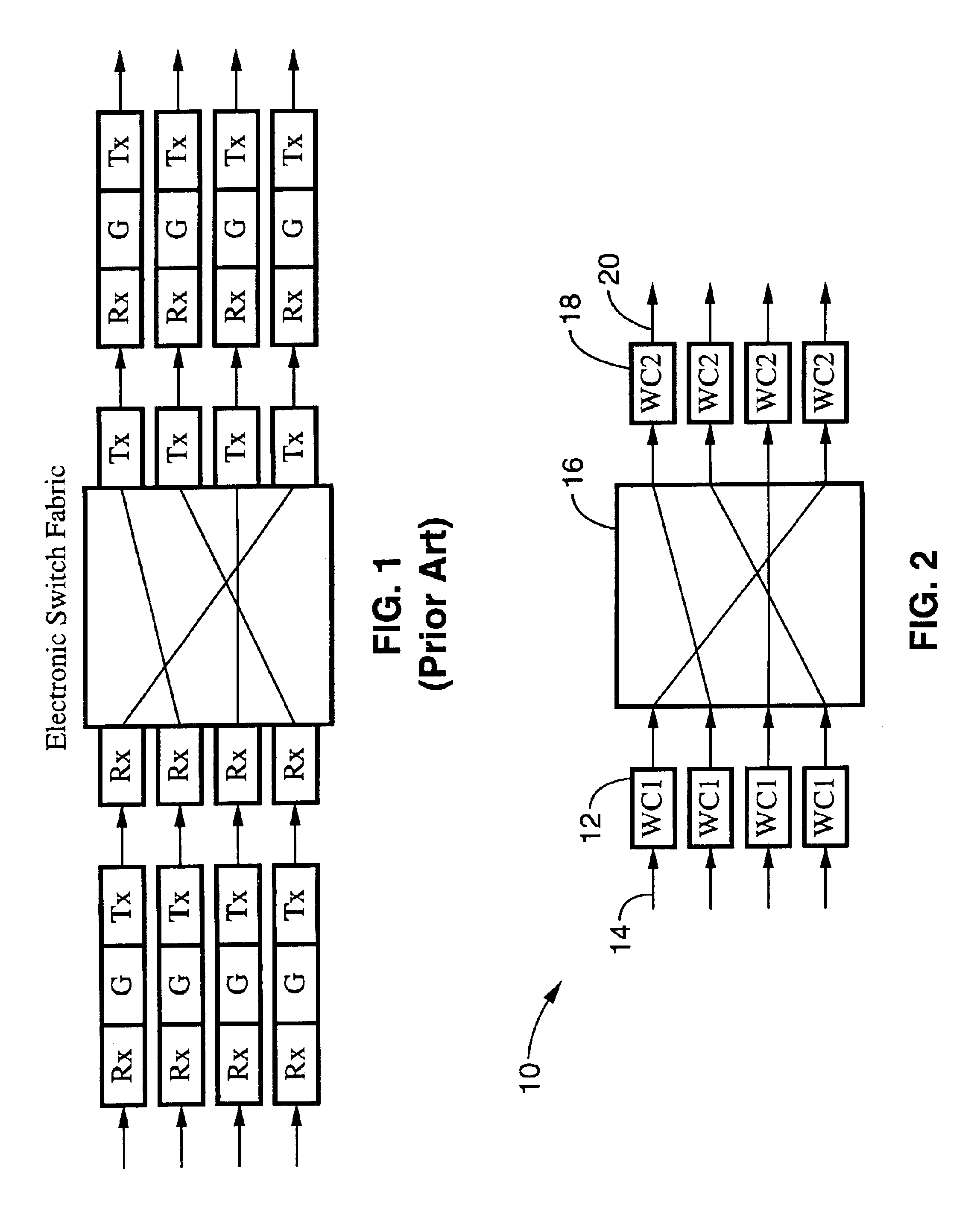Ultra-low latency multi-protocol optical routers for the next generation internet
a multi-protocol, optical router technology, applied in the field of interconnected computer networks, can solve the problems of limiting factors in scaling these large electronic routers, power requirements, and limiting factors in scalability of electronic routers, and achieve the effects of high data rate, low latency, and high throughpu
- Summary
- Abstract
- Description
- Claims
- Application Information
AI Technical Summary
Benefits of technology
Problems solved by technology
Method used
Image
Examples
example 1
[0104]Semiconductor, silica, and polymer based AWGs have been implemented to date. For InP based AWGs, the fabrication methods combine dry etching (e.g. reactive-ion-etching), wet chemical etching, and epitaxial regrowths (e.g. OMCVD). Rotation of the wafer during the epitaxial growths facilitates fabrication of uniform AWGs in order to reduce phase errors. In addition, it is possible to achieve three-dimensional integration of multiple of the inherently two-dimensional AWGs by adopting innovative lateral growth techniques offered by hydride vapor phase epitaxy (HVPE). This technique allows the first AWG to be fabricated and buried in an atomically planar surface. The second and subsequent AWG can be fabricated on the buried AWG.
[0105]FIG. 12A through FIG. 12H illustrate this fabrication procedure 700 of vertically integrating waveguide arrays. FIG. 12A illustrates the initial epitaxial growth of the InGaAsP waveguide core layer 702 on an InP substrate 704. FIG. 12B illustrates depo...
PUM
 Login to View More
Login to View More Abstract
Description
Claims
Application Information
 Login to View More
Login to View More - R&D
- Intellectual Property
- Life Sciences
- Materials
- Tech Scout
- Unparalleled Data Quality
- Higher Quality Content
- 60% Fewer Hallucinations
Browse by: Latest US Patents, China's latest patents, Technical Efficacy Thesaurus, Application Domain, Technology Topic, Popular Technical Reports.
© 2025 PatSnap. All rights reserved.Legal|Privacy policy|Modern Slavery Act Transparency Statement|Sitemap|About US| Contact US: help@patsnap.com



